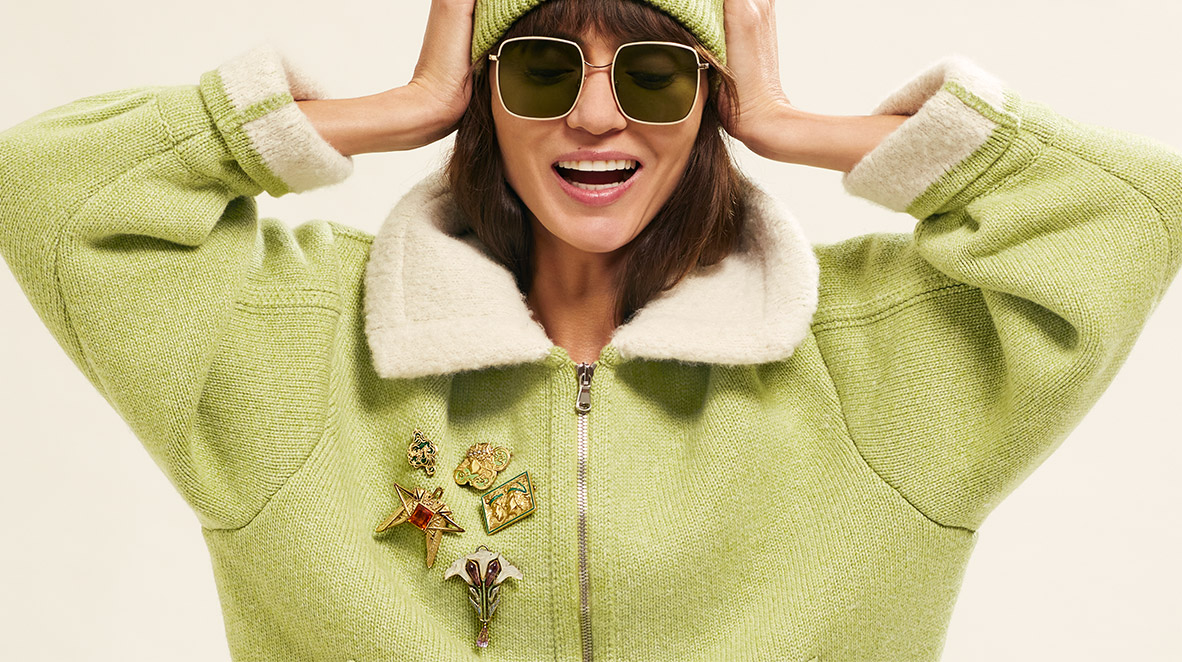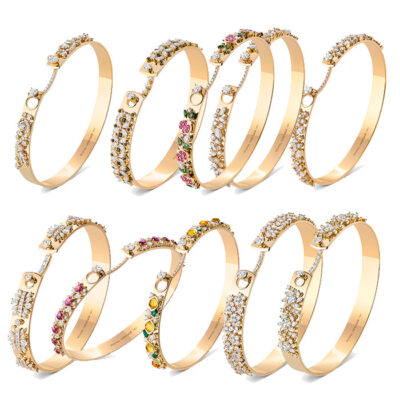Style
12 January 2023
Share
TFJP x Christie’s Paris, how to wear vintage jewelry /5
This is the fifth in the series of “How to wear vintage jewelry”, produced by TFJP with the jewelry department of Christie’s Paris – a chance to breathe new life into brooches and the Art Nouveau style.
By Sandrine Merle.
The look was designed to offset five Art Nouveau brooches by René Lalique, the master of this style. The largest of these marvels, dating from the very early 20th century, measures less than 7×5 cm. The smallest is barely 3×2 cm. They feature a datura flower (a poisonous plant), two roosters and two grasshoppers on either side of a citrine. Two of them show women’s profiles merging with arabesques typical of the time. The gold is highlighted with enamel, mother-of-pearl and precious stones.
Challenging conventional wisdom
This look reviving the Art Nouveau brooch starts out with two handicaps. Brooches being the least loved of jewels, this one would be difficult to wear: too solemn, too ladylike. With its pin piercing the fabric, It could also rip clothes. Neither is the Art Nouveau style itself flavor of the month: it’s criticized for being too complicated, with its sinuous lines, its blurred faces, and so on. Not to mention too fragile – owing largely to the delicacy of the work and its great age: it’s over 100 years old after all. It has always suffered by comparison with the powerful lines of Art Deco. This picture illustrates the exact opposite!
Focus on a cluster look
To counteract these misconceptions, don’t play the trophy brooch card hanging prominently on the lapel. Take advantage of the mini-mini size and geometric shape of these Art Nouveau pieces, treat them as a cluster. That helps them get away from their “museum piece” image and look more like pins bought in a souvenir store. The so-called “pin lovers”, collectors of these metal pins, will approve! This is an idea that can be used with all types of brooches.
Toying with contrasts
Another way to bring the Art Nouveau brooch into the 21st century is to forget the overly dressy side, the ultra-fragile clothes like chiffon, which it might indeed damage. Choose thicker, stiffer, rougher or sportswear materials. The wool jacket from Barrie (a cashmere specialist), designed for the coldest weather, is perfect. Don’t hesitate to add a hat pulled down to the ears.
These Art Nouveau brooches look set to please the younger generation! Who’d have thought it?
Jacket and cap: Barrie / Jeans: Levi’s / Sunglasses: Nathalie Blanc / Baskets: Gola
Photograph: Laura Bonnefous
Model: Sinara (Tribe Management)
Stylist: Stéphanie Brissay
Make up / hair: Laura Merle
Assistant: Loup Catusse
Retouching: Granon Digital
Related articles:
TFJP x the jewelry department of Christies Paris, how to wear vintage jewelry /4
TFJP x the jewelry department of Christie’s Paris, how to wear vintage jewelry /1
TFJP x the jewelry department of Christie’s Paris, how to wear vintage jewelry /2
TFJP x the jewelry department of Christie’s Paris, how to wear vintage jewelry /3















